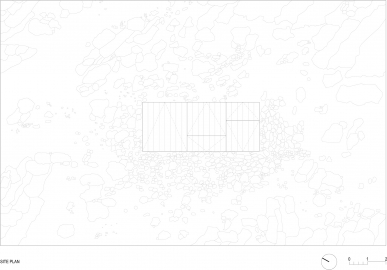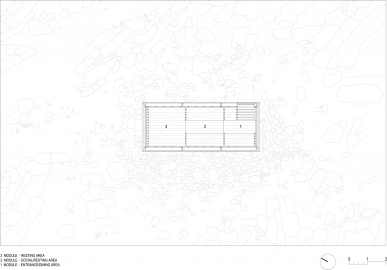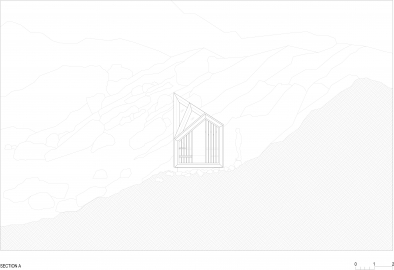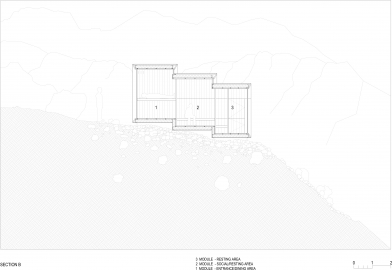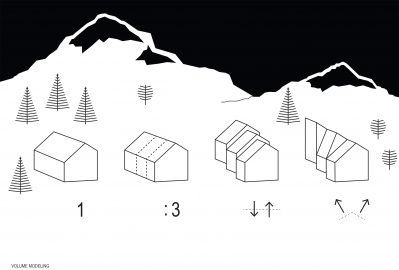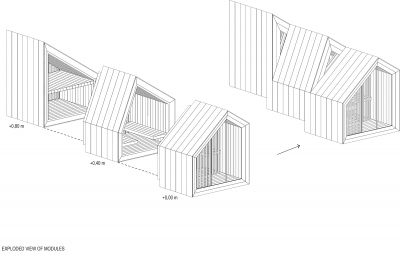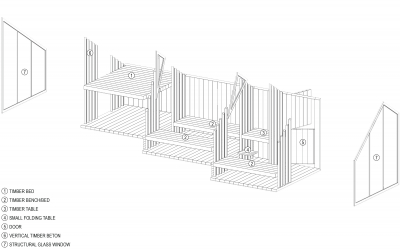Alpine Shelter on Skuta Mountain
120 years after the installation of Aljaz Tower in August of 1985 on Triglav*, this new shelter was placed below Mountain Skuta in Kamnik Alps. It is replacing a 50 year old bivouac that had previously been on the site.
Responding to environmental conditions is not only a protective measure, but also translates into a matter of immediate life safety. The harsh conditions of wind, snow, landslides, terrain, and weather require
a response of specific architectural forms and conceptual designs. The design consists of three modules, in part to allow for transport and also to programmatically divide the space. The first is dedicated to the entrance, storage and a small space for the preparation of food. The second one provides space for both, sleeping and socializing while the third features a bunk sleeping area. Windows at both ends offer beautiful panoramic views of the valley and Skuta Mountain.
Due to the nature of the installation process, the shelter was designed as a series of modules so that it could be brought to the mountain in parts. The entire prototype was constructed off-site in the workshop. The modules were planned as a series of robust frames, which would then be braced together onsite providing a manageable installation and a less invasive foundation. In order to keep the mountain site as undisturbed as possible, the modules are fastened onto strategically placed pin connections, which also act as the foundation on the site. The glass is a triple pane system that has been calculated to withstand to the projected strong wind and snow loads. Installation of the bivouac was carried out by PD Ljubljana Matica under the direction of Matevz Jerman, helicopter transport while the Slovenian Armed Forces and a team of Mountain Rescue Service - station Ljubljana. The whole transportation and installation process was carried out in one day.
The bivouac is an object that represents a basic human necessity, a shelter. It is a symbol of refuge. The outer form and choice
of materials were chosen to respond the extreme mountain conditions, and also provide views to the greater landscape.
Its position within the wilderness requires respect for natural resources, therefore must meet the ground in a light and firm manner
to ensure the shelter is strongly anchored while having a minimal impact on the ground. In addition, the outer shell needed to be realised with a highly resistant material and in collaboration with Rieder thin glass fibre öko skin concrete elements were able to meet all the requirements of aesthetics, material quality and the challenge of being able to withstand especially rigorous weather conditions.
The design of the interior dictates modesty, totally subordinate to the function of the shelter providing accommodation for up to eight mountaineers.

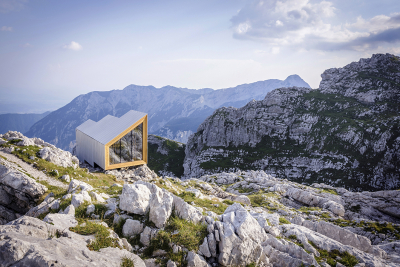 © Anze Cokl
© Anze Cokl
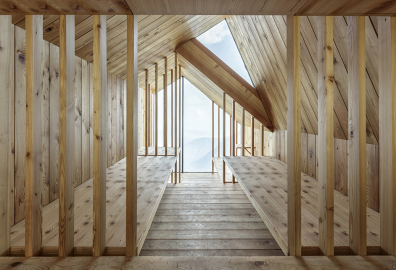 © Anze Cokl
© Anze Cokl
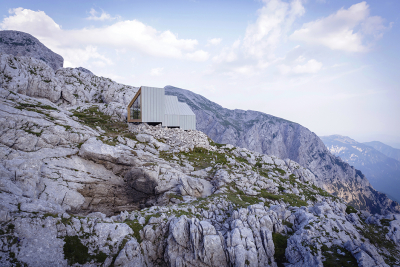 © Anze Cokl
© Anze Cokl
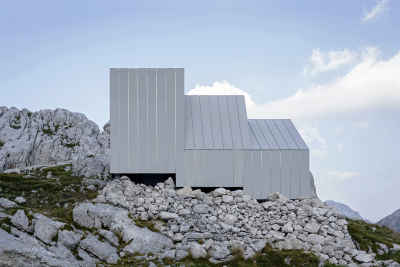 © Anze Cokl
© Anze Cokl
 © Anze Cokl
© Anze Cokl
